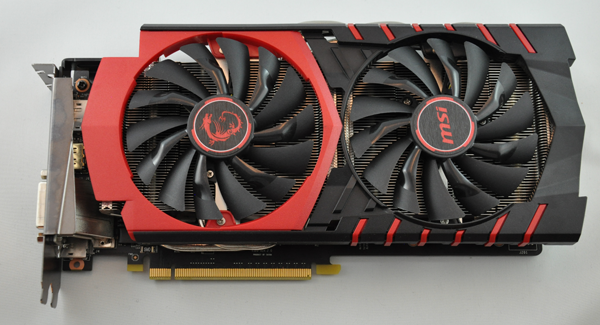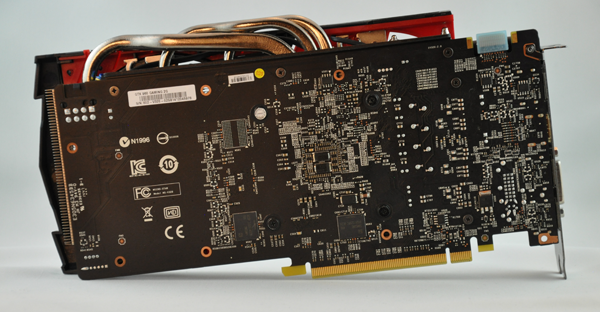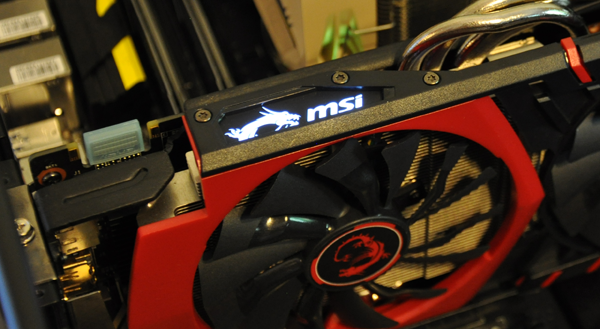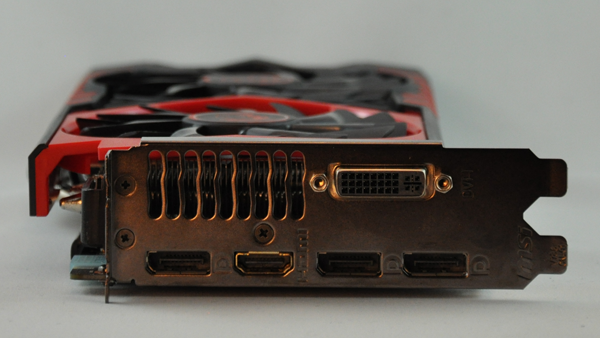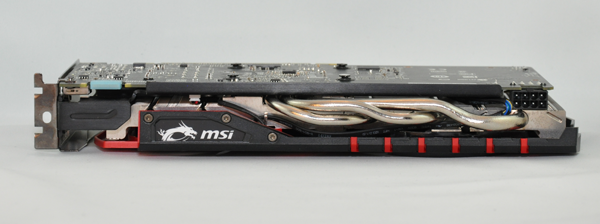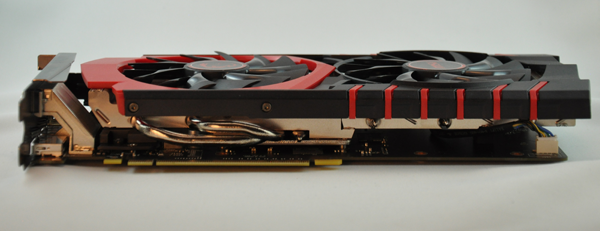MSI GeForce GTX 960 Gaming 2G Review
MSI’s GeForce GTX 960 Gaming 2G has the largest cooler and biggest fans of the GTX 960 cards we’ve tested so far, but does it perform any better?
Why you can trust Tom's Hardware
Product 360
The MSI GeForce GTX 960 Gaming 2G is built on a custom PCB with a factory-overclocked GM206 GPU under MSI's latest thermal solution, the Twin Frozr V, to keep it cool and quiet. As of this writing, you can find the card on Newegg for $215.
MSI has been using its Twin Frozr coolers for a number of years now. Each generation, the company tries to improve the solution's performance, while lowering noise output. Currently on the fifth version, Twin Frozr V is said to be smaller and quieter, armed with stronger fans than the previous version.
A few key components make up the cooling solution. MSI installs 10.1cm Torx fans onto the Twin Frozr V. Using a combination of two different fan blades, the company claims to be able to move air more efficiently. Each blade alternates between standard fan blades designed to push air downwards and dispersion blades designed to maximize air flow.
The fans use the company’s Zero Frozr technology, which was introduced in 2008. Most Maxwell-based GPUs now have the same kind of capability. The fans can be stopped completely in idle and low-load situations to keep noise levels down. In addition, MSI adds the ability for its firmware to control the fans independently. In low-heat situations, it’s possible for only one fan to be spinning rather than both (or neither, for that matter).
The Twin Frozr V cooler is also built using airflow control technology, which MSI says helps push more air onto the four nickel-plated copper heat pipes that are in turn attached to a large nickel-plated copper base.
As a gaming card, this board is about more than just function. MSI adds an LED to light the company's dragon logo and name on the top edge. When the PC powers on, the light turns on and can then be controlled by the company’s Gaming app. The same software is also used to control the factory overclocks, of which there are three.
MSI’s GTX 960 may be optimized for cooling, but that seems to come at a price. This card is the largest of all GeForce GTX 960s we've tested. It weighs in at 763g and measures 280mm long, 140mm tall and 37mm wide. By comparison, Asus’ Strix 960 is only 215mm by 121mm.
Get Tom's Hardware's best news and in-depth reviews, straight to your inbox.
The card is capable of driving four displays simultaneously through a combination of DVI, HDMI and DisplayPort interfaces. The outputs are arranged in the same pattern as Nvidia’s reference GeForce GTX 970 and 980.
Power is delivered through a single eight-pin connector on the top edge. The plug is oriented so that the lock is facing outwards from the card. Along the same edge, a single SLI interface is available for two-way configurations.
MSI does a good job with the packaging. The graphics card is surrounded in soft foam on all sides, and all of the extras are inside a box separated from the hardware. Inside, you’ll find a user’s guide, a small catalog of other MSI products, a driver disc that includes the software used to control the overclock and lighting effect, and a DVI-to-VGA adapter.
Kevin Carbotte is a contributing writer for Tom's Hardware who primarily covers VR and AR hardware. He has been writing for us for more than four years.
-
HideOut The price is for the best cooler in the field. Would be excelent in a higher end HTPC/gaming combo machine where silence or near silence would be nice.Reply -
crisan_tiberiu I am a bit confused in the decision of Tom's, not to compare data with the red team. All i can see is the comparison of 4 identical chips.Reply -
chimera201 Reply16254761 said:I am a bit confused in the decision of Tom's, not to compare data with the red team. All i can see is the comparison of 4 identical chips.
Tom's is comparing the different brand offerings for GTX 960 - that is what everybody wants right? You will find comparison with other cards in the reference card review (they didn't get the reference card though)
-
bigpinkdragon286 AMD doesn't have new cards to compare the GTX 960 to. The only segment this card is competitive in is power consumption, otherwise beaten by 4 year old cards.Reply -
Wisecracker It looks exactly like the MSI Radeon R9 380 Gaming 2GB ...Reply
Near identical acoustic performance, too.
-
Covaylent "In the graph, MSI’s card is listed at 34 degrees."Reply
Did you mean decibels?
Also, there was no mention of the HDMI version included with this card. For clarity, is this HDMI 2.0?
Thanks! -
CompuTronix Precise overclocking frequency is not specified. Only +150 is mentioned.Reply
Reference +150?
Gaming Mode +150?
+150 = what frequency?
-
kcarbotte ReplyI am a bit confused in the decision of Tom's, not to compare data with the red team. All i can see is the comparison of 4 identical chips.
This came down to availability of cards, and timeframe. I only had this card in hand for 4 days to do the testing. I'm fairly new to Tom's (having started in January) and had not yet reviewed any AMD cards. As such, I did not have any on hand.
It should be noted that this review has been in the queue for a while now but was delayed to make room for the 980ti, Fury X and Fury releases.
It looks exactly like the MSI Radeon R9 380 Gaming 2GB ...
Near identical acoustic performance, too.
The tests were all done in May, long before AMD released the R9 380 to compare it against. MSI uses the same fans and near identical cooler, so the accoustic performance should be on par.
Precise overclocking frequency is not specified. Only +150 is mentioned.
Reference +150?
Gaming Mode +150?
+150 = what frequency?
My apologies, it wasn't meant to be confusing.
The overclocking was done from the base Gaming Mode clock speed.
"Gaming Mode is the default setting; its GPU clock setting is 1190MHz, while GPU Boost is increased to 1253MHz"
1190 + 150 = overclocked speed of 1240Mhz.
